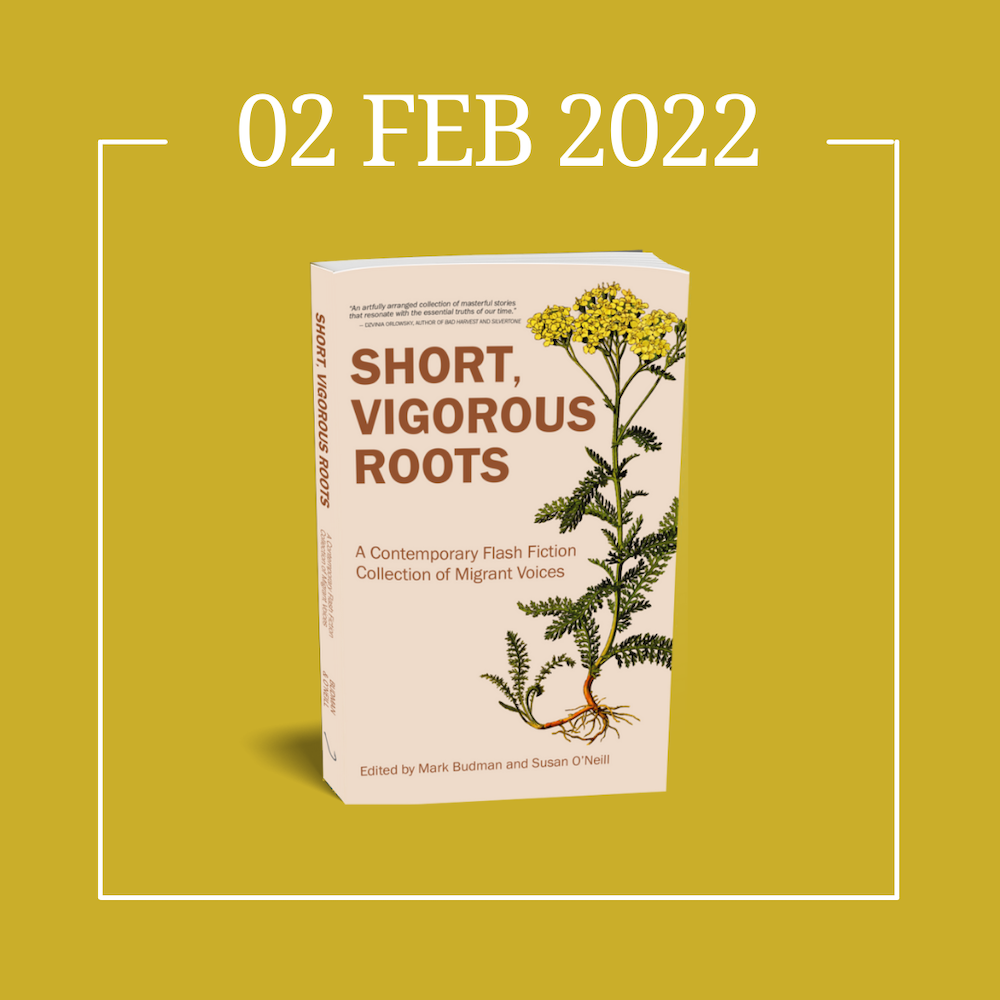A lot of progress has been made in recent months as we near the pub date for Short, Vigorous Roots: A Contemporary Flash Fiction Anthology of Migrant Voices! With the support of our entire press, it is the project team’s mission to prepare this dynamic book for a successful launch and future sales. Book blurbs are one tool we have to help us invite that success.
If you’re a reader, you’ve encountered many blurbs in your lifetime and will most likely come across countless more. Blurbs are, according to Merriam-Webster, “a short description that praises something (such as a book) so that people will want to buy it.”
Sometime in the nineteenth century, Ralph Waldo Emerson received a copy of Leaves of Grass by the then-unknown author, Walt Whitman. Colin Dwyer from NPR reports that “on reading the first edition…Emerson had mailed Whitman back a glowing note…” Later, Emmerson, “a nationally esteemed intellectual,” gave consent for Whitman to publish the full letter in the New York Tribune. A year later, “one line of that letter…[was] printed in gold-leaf lettering on the spine of the book’s second edition, sharing space only with the title and Whitman’s name,” resulting in the first book blurb: “I greet you at the beginning of a great career.” Pretty beneficent! I would have bought that book!
Max Tucker, the co-founder of Scribe Media, states that blurbs can be a way to “add credibility to your book” and describes the who, what, where, why, and how of blurbs in his article, “How to Get Incredible Blurbs for Your Book.” Tucker explains that book blurbs can be used in several ways. Aside from going on the front cover, blurbs can be placed on the back cover, the inside flap, before the title page, on the book’s websites, pages, profiles, press materials, and even in the metadata.
Short, Vigorous Roots has inspired several literary and industry professionals to blurb for us, and I am truly grateful. I want to acknowledge those generous people who accepted my invitation to read an advanced copy of the book and provide Ooligan Press with a blurb, as well as those who weren’t able to yet were gracious enough to help spread the word about this important title.
The process of requesting blurbs begins with a massive contact sheet—a focused list of people who may be interested in writing a blurb for the book. It involves reaching out to a lot of people: “the more names, the more likely you are to get a yes,” Tucker says, adding that we want to ask people who have a “strong connection with both [the] audience and the material…because the more focused the blurb list is on your audience, the better.” In our case, this all proved true.
The project team spent time researching and collecting contact information for about a hundred potential blurbers. As the project manager, I surveyed the two editors, Mark Budman and Susan O’Neill, and our thirty-two contributing authors to obtain the names of anyone they suggested we connect with, which was a terrific way to cast a wide net and grow our network of folks who care about this book.
The next step was to create an email template for the blurb requests. The template leaves space for personalization; we want the people we reach out to know that we know who they are and that we chose to request a blurb from them because we respect their work and believe they have a connection to our title. It’s a lot of work, but the team steps up and even enjoys it; becoming familiar with literary professionals and important names working in immigration and global industries is really rewarding. Once these letters are written, they undergo a deep approval process, ultimately being sent out by the project manager.
The response has been humbling and powerful. The literary community is excited about Short, Vigorous Roots, and people agree that this is an important collection of stories! All of the blurbs we receive are added to our metadata, and we choose which blurbs to feature on our book jacket. We have strategies and campaigns planned for featuring these beautiful, buzzworthy words to promote the book and attract readers.

